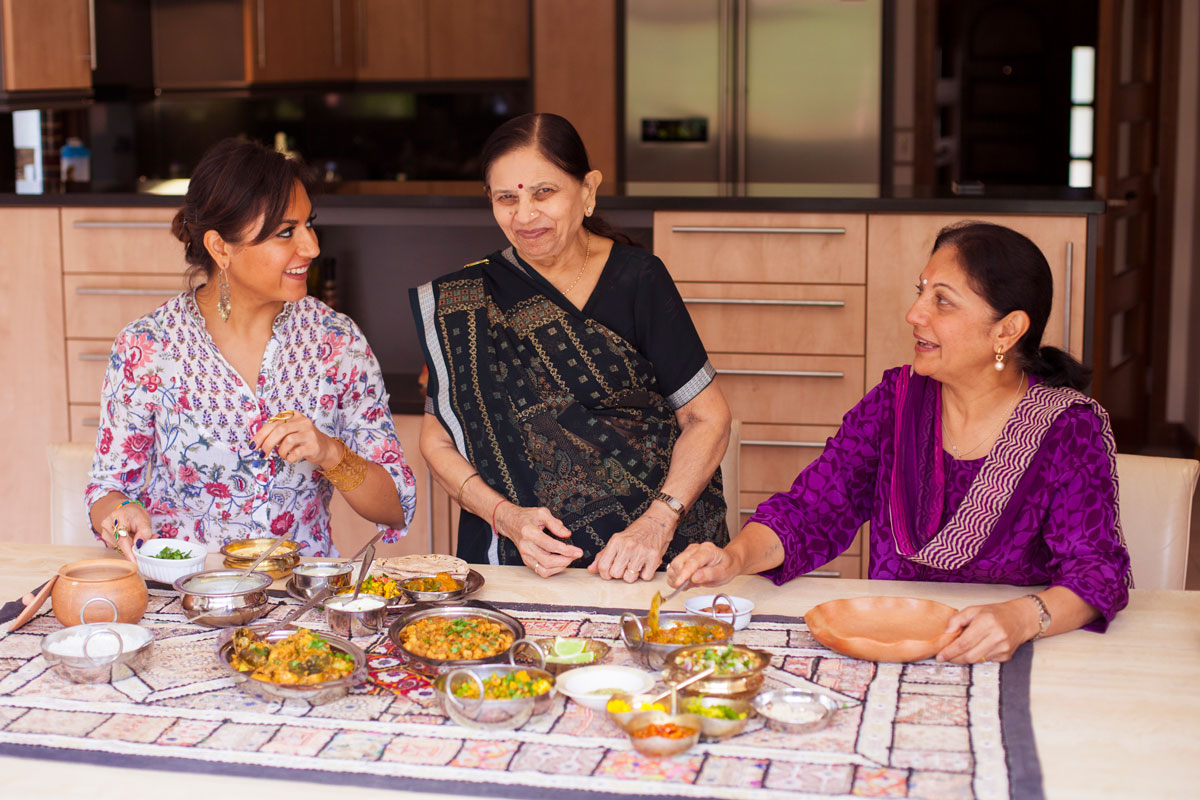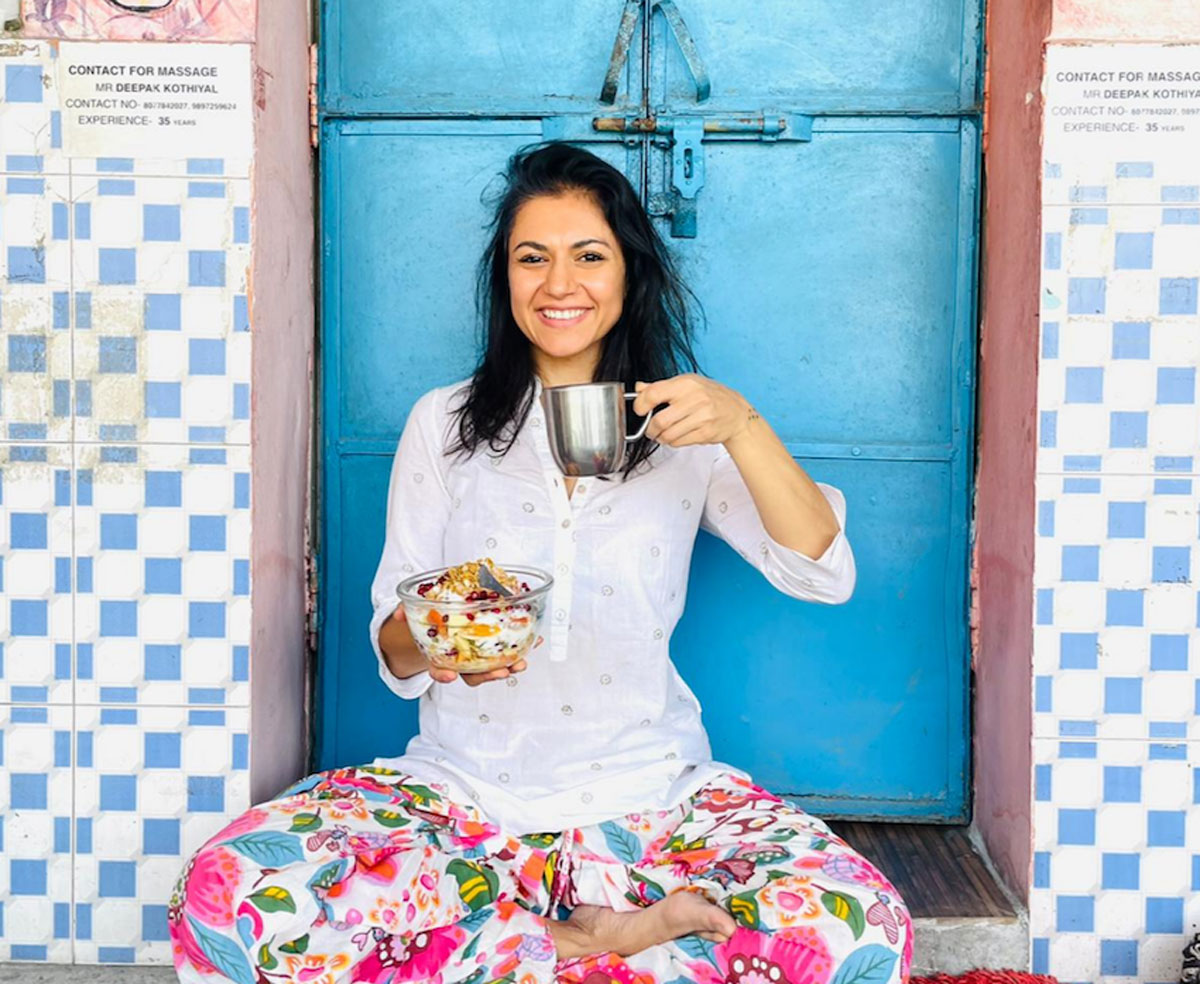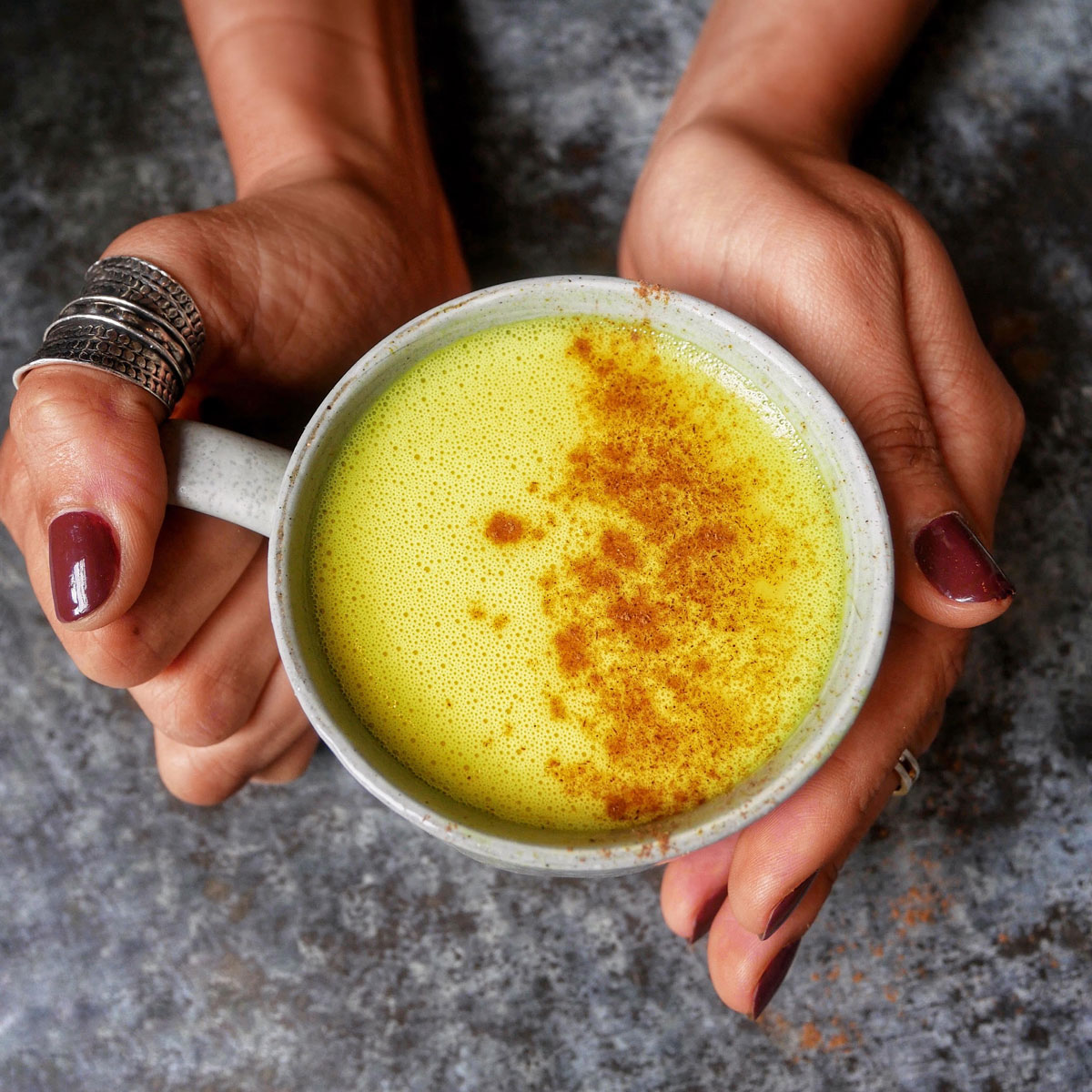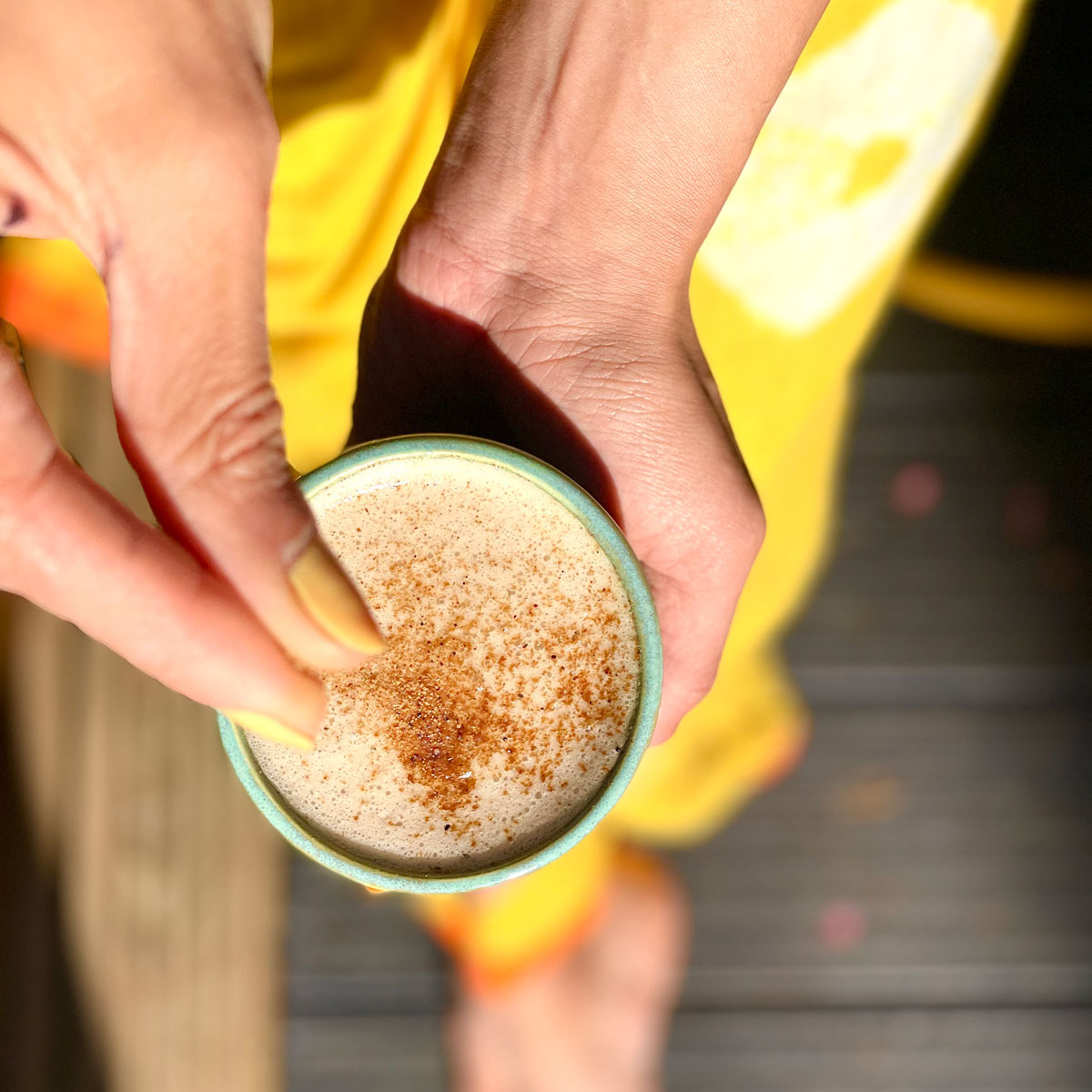The book of chai: how tea intertwines with friendship, family and love
In her book, The Book of Chai: History Stories and Recipes, Mira Manek beautifully traces the history of chai-drinking in India. TASTE staffer Fatima Saib struck up a friendship with Mira on Instagram, fuelled by a shared love of the drink. Here’s the story of this unique recipe book, plus Mira’s top tips for making an excellent cup of chai.
Mira Manek has an effortless flair for storytelling. Chai, as we know, is a ritual for many – me included. Like so many people around the world, I start my day with a steaming cup of chai, peppered with a pinch of spices such as ground cardamom and cinnamon for a quick fix, or when I have more time, cloves, star anise and a dash of nutmeg. Mira romanticises this ritual, saying, “The scent of the simmering spices in the early morning lifts the spirits before even a drop is drunk; during the day it serves as a punctuation mark, a time to stop and reawaken; for some, it is a ritual to end the day with calm.” I was hooked from the very first page.
Like a cup of well-made chai, this book is the perfect balance of history, memoir and wonderful recipes. Many of Mina’s stories are steeped in childhood memories of time spent with her grandparents and a lot of the stories are inspired by those that her grandmother told her.

“As my grandmother reminisces about these cups of chai that shaped her day, I reflect on how the history of chai interweaves with that of my own family, how chai has been a constant, the way my father still loves to grate ginger when making his own chai, the small jar of chai masala my mother always carries on her travels, and that I now sell chai spices as my business. The chronology of when chai became popular in India, how it altered from cities to villages, and when the spices started being used might be nebulous, but it was clearly very much a part of daily life by the 1930s, even in the smallest of villages, and as far away as Mombasa and Uganda, where both sets of my great-grandparents made chai daily.”
But her inspiration behind the book also stems from her travels around India – “the calm of the villages and the frenetic streets of cities, the old and the new, theatre of chai walas (tea vendors), the ghats of Varanasi, trips to Kailas, train journey to Bihar, my grandmother’s trousseau of memories and her travels – the list goes on.” There was also plenty of research that went into it: “The history, which I found incredibly fascinating, came after, even though this is the first section of the book. This required more research and reading, as well as interviewing historians, understanding the ‘lassification’ of chai, as one historian in India called it.” The book gives insight into travelling in India, the flavours of chai, how it was born and, of course, a host of recipes.
I chatted to Mira about the book, her inspiration and the importance of telling the story of chai.

What inspired you to write this book?
This is my third book – the first was a bestselling cookbook called Saffron Soul and the second was a book on Ayurvedic rituals and happiness called Prajna. The plan was for my third book to be about health and nutrition – I wrote a proposal and even had a working title. The chai book idea dropped into my mind (literally a lightbulb moment) a couple of years ago. It was the stories that I started writing first – and they just started flowing and flowing! The rest, the history and recipes and the structure all came after. I have absolutely loved writing this book – most of all the stories, as well as researching the history!
Which recipes in the book are you most excited for your readers to try?
Overall, I’m excited for readers to realise the amazing simplicity of adding spices to drinks and making a chai according to their flavour, mood and taste. As well the food and snack recipes! I’ve already had photos and messages from friends and readers of recipes they have made using the blended overnight oats, to the saffron chai, the carrot masala chai cupcakes, the sweet potato Bombay sandwich – and one of my favorites, the kadha drink recipe, which I’ve served at many of my events, along with my classic “chai by Mira”.
Why did you find it important to tell this story about chai?
For me, even though chai means tea (and that’s it!), chai has always been about the addition of spices, how the spices make me feel, how they warm me like an internal hug. And, having researched them and written a book on Ayurveda, I came to understand the healing benefits of each spice, how they aid digestion, help to reduce inflammation, boost the mood, relax the mind, and so much more. I might change the spices I use day by day, but that’s the beauty of chai – there really is no right way. And you’ll find all sorts of chai recipes in my book.
In the same breath, this book is also about the purposeful ritual of making chai, of slowing down, of taking a moment, an extension of my second book Prajna: Ayurvedic Rituals for Happiness, the daily practices that keep us afloat, that inject a sense of purpose and happiness. I’ve also sprinkled lots of stories in this book, and thus The Book of Chai has become a vehicle to tell my personal stories, to delve into my treasure trove of memories, to speak to my grandmother and encapsulate the enriching details from her childhood – to share and preserve them. Chai is the thread that weaves these stories together.

How do you see the global perception of chai evolving, and what role do you hope your book will play in this evolution?
The interpretation and meaning of chai in different parts of the world is as fascinating as the history of chai (you’ll understand this if you delve into my book – or even if you just read the introduction). The Book of Chai not only gives people an understanding of chai and how masala chai was born, but also what this drink means to people, that it is a wonderful ritual to savour, to take time over, to inhale. What I still find so surprising and interesting is that the history of chai is so recent (tea was only drunk by Indians in the early 1900s), yet most of us deem chai to be India’s national drink with an ancient history. That said, the history of drinking spices in hot water dates back to the Ayurveda, so it is thousands of years old.
Tips for the perfect cup of chai
While Mira shares a myriad recipes (about 60) for making chai, chai-infused desserts and snacks to enjoy with chai, I asked her to share her top tips for the perfect cup, every time. While she noted that “there is no perfect chai and everyone makes it differently”, she did share her version of the perfect chai. The most important point is to use “loose tea rather than tea bags and then strain the chai into cups. Using loose tea does make a difference as it is much better-quality tea.” She also mentions that you can use any mix of spices you like, such as cardamom, cinnamon, ginger and black pepper.
- Boil the spice or masala blend in hot water with tea leaves. If using whole rather than ground spices, crush them a little using a pestle and mortar first so that they are more flavourful and their delicious juices and flavours release as they should and seep into the drink. Add the milk after the brew has boiled for a few minutes.
- Let this boil for another five or so minutes to allow all the ingredients to brew and blend well.
- Add sugar or any alternative if you like, as the sweetness enhances or brings out the spice flavours and profiles.

Her book ends with a powerful summary: “Chai is a ritual that feels so much a part of Indian culture and life that it seems steeped in history, yet it’s a relatively new thing, a cultural phenomenon that has become synonymous with India. I hope, as I take another sip of chai and form yet another chai-inspired memory, that the meditative ritual of making chai, the tradition of drinking chai, the sound of slurping, the theatre of proud chai walas on the streets of India, the act of offering chai to guests, of both politics and heartbreak being discussed over chai, and all the variations of spice blends added to chai, will be passed down from generation to generation and live on.”
If there is one book you read this year, make it this one.
This is Mira’s third book. She is also founder of Chai by Mira, a chai spice brand that supplies cafés and restaurants, and sells spices online. Mira is also a nutrition, health and wellness expert, running “Reset + Reframe” workshops and retreats.
The Book of Chai is published by Headline Hachette.



Comments